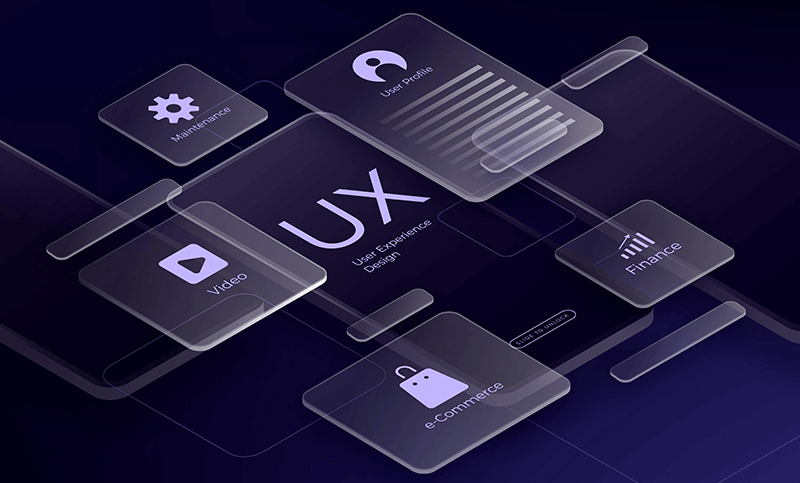What is UX Design?
Welcome to our exploration of User Experience (UX) Design, a pivotal field in digital product development. UX Design is the art and science of creating exceptional user experiences as they interact with websites, apps, and various digital interfaces. It's not just about aesthetics; it's about the seamless flow of functionality, the intuitive navigation, and the satisfaction users derive from their interactions.
We will delve into the core principles, methodologies, and best practices that underpin UX Design. We'll discover how UX designers conduct user research, develop information architectures, create wireframes and prototypes, and perform usability testing to ensure user-friendly and efficient products. We'll also explore the symbiotic relationship between UX and UI (User Interface) Design, where aesthetics meet functionality.
Whether you're a budding designer, a curious user, or a business owner looking to enhance your digital presence, join us on this journey to unravel the secrets of UX Design and learn how it shapes the digital experiences we encounter daily.
What Does UX Stand For?
UX stand for User Experience. One of the earliest references to the term "user experience" can be attributed to Donald Norman, a cognitive scientist and usability engineer. In his book "The Design of Everyday Things," published in 1988. Which has not been abbreviated to UX or UX design.
What is User Experience Design?
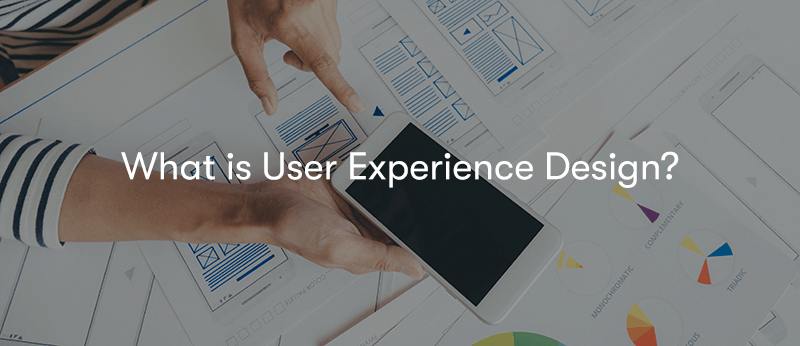
User experience design is a multidisciplinary field that focuses on creating products, services, or systems that provide meaningful and enjoyable experiences for users. It encompasses a range of activities and considerations aimed at understanding, designing, and improving the interactions between users and digital or physical products.
UX designers work in various industries, including web and app development, product design, and software development. Their goal is to create products that are functional, delightful, and satisfying to use, ultimately enhancing user satisfaction and loyalty.
What is the Goal of UX Design?

The primary goal of UX design is to create products, services, or systems that provide users with a positive, meaningful, and satisfying experience. This encompasses a range of objectives and outcomes to enhance user satisfaction and achieve organisational goals.
Achieving these goals can lead to increased user satisfaction, improved product adoption, and greater business success.
How Does UX Design Work?
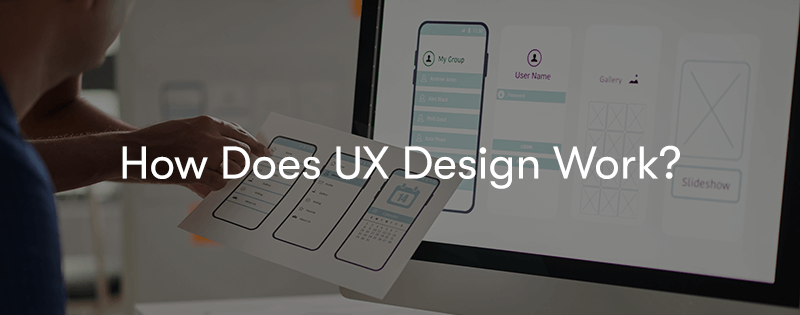
UX design is a systematic and iterative process that involves multiple stages and activities. Here's a general overview of how UX design works:
Research
The process begins with extensive research to understand the target users' needs, behaviours, and pain points. Standard research methods include user interviews, surveys, persona development, and competitive analysis.
User Flows and Information Architecture
Based on research findings, UX designers create user flows and information architecture. User flows outline the steps users take to accomplish tasks, while information architecture defines the structure and organisation of content and features.
Wireframing
Designers create low-fidelity wireframes that outline the layout and placement of elements on a page or screen. These wireframes are often simple sketches or digital representations that focus on the structure and functionality of the design.
Prototyping
Prototyping involves creating interactive and more detailed representations of the design. These prototypes can range from basic click-through mock-ups to high-fidelity, interactive simulations that closely resemble the final product.
Usability Testing
Usability testing involves gathering user feedback by having them interact with the prototypes. This helps identify usability issues, gather user insights, and make necessary design improvements.
Visual Design
Visual designers work on the product's aesthetics, including colour schemes, typography, images, and overall visual style. The goal is to create a visually appealing and cohesive design that aligns with the brand and user expectations.
Development and Implementation
Once the design is finalised, developers or engineers work to build the product based on the design specifications. Close collaboration between designers and developers ensures the final product matches the intended design.
Testing and Quality Assurance
The developed product undergoes rigorous testing to identify and fix functional or technical issues. Quality assurance (QA) ensures that the product functions as expected and meets the design and usability standards.
Launch
After thorough testing and refinement, the product is launched and made available to users. The launch phase may include marketing and promotion efforts to attract users.
Post-Launch Evaluation
The work doesn't end with the launch. UX designers continue to gather user feedback, monitor analytics, and assess how well the product meets its goals. This information informs further improvements and updates.
Iterative Design
UX design is an iterative process, and the cycle continues as designers make ongoing refinements and enhancements based on user feedback and changing requirements.
Cross-Functional Collaboration
Throughout the process, UX designers collaborate closely with other team members, such as developers, product managers, marketers, and stakeholders, to ensure a cohesive, user-centred product.
Documentation
Throughout the process, documentation is crucial. This includes design specifications, user personas, user journey maps, and other materials that help communicate the design and its rationale to the team.
UX design is a dynamic and flexible process that adapts to the specific needs of each project. It emphasises user-centred design, continuous improvement, and a deep understanding of user needs and behaviours. The goal is to create products that function well and provide a positive and meaningful experience for users.
What Does a UX Designer Do?
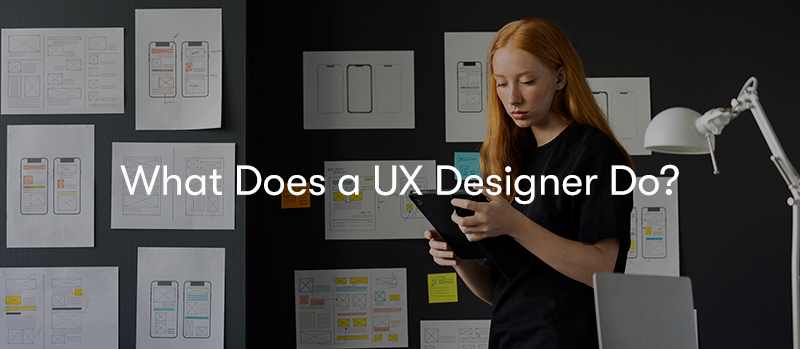
A UX designer ensures that a product, service, or system provides a positive and user-centred experience for its intended users. The role of a UX designer encompasses a wide range of tasks and responsibilities throughout the design and development process. Here are some key activities that a UX designer typically performs:
- User Research
- Information Architecture
- Wireframing
- Prototyping
- Usability Testing
- Visual Design
- Collaboration
- Accessibility
- Iterative Design
- Documentation
- User-Centred Design
- Cross-Functional Skills
In summary, a UX designer's role is to advocate for the user and ensure that a product or system is designed with the user's needs and preferences in mind. They work to create intuitive, user-friendly, and enjoyable experiences that align with both user goals and the goals of the organisation or project.
What Are the Main Principles Used by UX Designers?
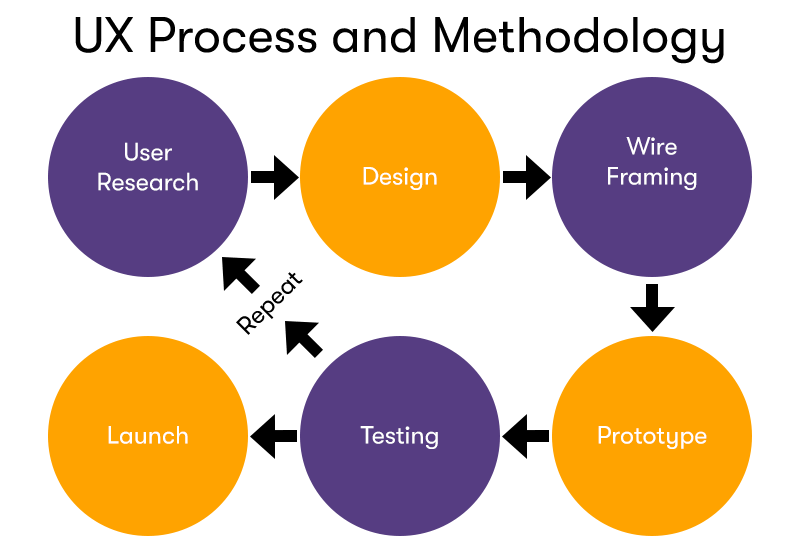
UX designers follow core principles and best practices to create products and experiences, prioritising user needs and delivering positive and meaningful interaction. These principles guide the design process and help designers make informed decisions. Some of the main principles used by UX designers include:
User-Centred Design
The user is at the centre of the design process. Design decisions are based on deeply understanding user needs, goals, behaviours, and preferences. This involves conducting user research and continually seeking user feedback.
Usability
The product should be easy to use and navigate. UX designers aim to minimise cognitive load, reduce friction, and ensure users can complete tasks efficiently and without errors.
Consistency
Consistency in design elements, such as layout, navigation, and interaction patterns, is crucial for creating a familiar and predictable user experience. Consistency helps users understand how to use the product and reduces confusion.
Accessibility
UX designers strive to make products accessible to users with disabilities. This includes designing for screen readers, keyboard navigation, and ensuring that content is perceivable, operable, and understandable by all users.
Clarity and Simplicity
Simple and clear design elements are more accessible for users to understand and interact with. UX designers aim to simplify complex tasks, avoid unnecessary complexity, and present information straightforwardly.
Feedback and Error Handling
The product should provide clear feedback to users about their actions and the system's responses. Effective error messages and recovery options help users understand and correct mistakes.
Efficiency
UX designers work to optimise user workflows, reducing the number of steps or clicks required to complete tasks. Efficiency contributes to a smoother user experience.
Aesthetics
While usability is essential, aesthetics also play a role in UX design. A visually appealing and coherent design can enhance the overall user experience and create a positive emotional response.
Learnability
Users should be able to learn how to use the product quickly and easily, even if they are new to it. Intuitive design elements and onboarding experiences help users get started with the product.
Flexibility and Customisation
Providing options for users to customise their experience can enhance usability. UX designers may incorporate settings or preferences that allow users to tailor the product to their needs.
Progressive Disclosure
Complex information or features can be gradually revealed to users as needed. This prevents overwhelming users with too much information at once.
Testing and Iteration
UX designers engage in usability testing and iterative design to continuously improve the product based on user feedback. This ensures that the design remains aligned with user needs and expectations.
Cross-Functional Collaboration
UX design often involves collaboration with other team members, including developers, product managers, and marketers. Effective communication and collaboration are essential to achieving a cohesive user experience.
These principles are not rigid rules but rather guidelines that help UX designers make informed design decisions. The specific application of these principles can vary depending on the context of the project, the target audience, and the product's goals. Ultimately, the goal is to create a user experience that is efficient, enjoyable, and aligned with both user needs and business objectives.
Where Can You Learn More About UX Design?
Our BCS Foundation Certificate In User Experience training course is perfect for anyone who wants to increase their knowledge of User Experience. The BCS User Experience course will teach you the UX methodology, best practices, techniques, and a strategy for creating a successful user experience. The course will cover the following topics:
- Guiding Principles
- User Research
- Illustrating The Context Of Use
- Measuring Usability
- Information Architecture
- Interaction Design
- Visual Design
- User Interface Prototyping
- Usability Evaluation
Click the button below to find out more.

How Can You Become a UX Designer?

Becoming a UX designer typically involves a combination of education, skills development, and practical experience. Here's a step-by-step guide on how to become a UX designer:
Educational Background
While a formal degree is not always required, having a relevant educational background can be beneficial. Many UX designers have degrees in fields such as psychology, human-computer interaction, graphic design, computer science, or industrial design.
Learn the Basics
Start by gaining a foundational understanding of UX principles, user research, and design concepts. You can do this through online courses, books, and tutorials. One popular course is our BCS Foundation in User Experience course.
Practice Design Software
Familiarise yourself with design and prototyping tools commonly used in the industry. Adobe XD, Sketch, Figma, and Invision are popular choices for creating wireframes, prototypes, and visual designs.
Build a Portfolio
Create a portfolio to showcase your UX design skills and projects. Include case studies that detail your design process, research, wireframes, prototypes, and outcomes. Even if you don't have professional experience, you can showcase personal or concept projects.
User Research
Develop user research skills by conducting interviews, surveys, and usability tests. Learn how to analyse and interpret research findings to inform your design decisions.
Networking
Attend UX-related events, conferences, meetups, and webinars. Networking with other designers can provide valuable insights, job opportunities, and mentorship.
Internships or Entry-Level Positions
To gain practical experience, look for internships or entry-level positions in UX or related fields, such as usability testing or UI (User Interface) design. These roles can provide valuable hands-on experience and exposure to real-world projects.
Build a Strong Online Presence
Create a professional online presence by joining UX design communities, participating in discussions, and sharing your work on platforms like LinkedIn. This can help you connect with potential employers and collaborators.
Continuous Learning
UX design is an evolving field, so stay up-to-date with industry trends, new tools, and best practices. Consider taking advanced courses or attending workshops to deepen your knowledge.
Apply for UX Design Jobs
Start applying for UX designer positions, junior or entry-level roles, and freelance opportunities. Tailor your resume and portfolio to showcase your skills and relevant experience.
Prepare for Interviews
Be prepared for UX design job interviews. Practice discussing your design process, presenting your portfolio, and answering common interview questions related to UX design.
Show Adaptability
Be adaptable and open to learning from your experiences. UX design can vary significantly between industries and organisations, so be ready to adjust your approach as needed.
Remember that the path to becoming a UX designer can vary depending on your background and goals. Building a solid portfolio and gaining practical experience through internships or freelance work are key steps toward establishing yourself in the field. Additionally, seeking mentorship from experienced UX designers can provide valuable guidance and insights as you progress in your career.
What's the Difference Between UX and UI Design?
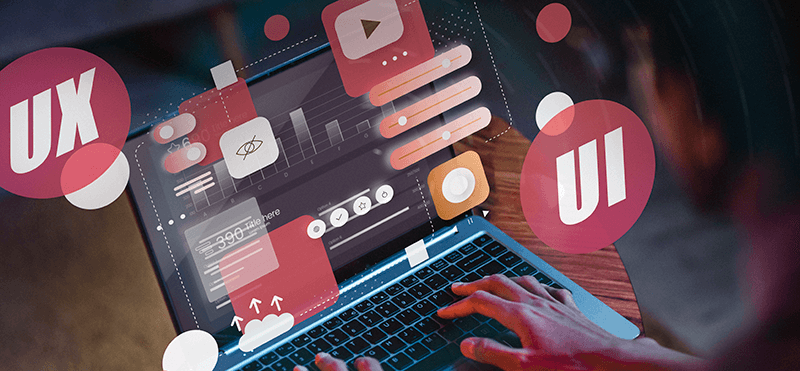
UX design and UI design are closely related but distinct disciplines within the field of product design. While they often work in tandem, they focus on different aspects of the user's interaction with a product. Here's a breakdown of the key differences between UX and UI design:
UX Design
Focus: UX design is concerned with the overall feel and functionality of the product. It concentrates on the holistic experience that a user has when interacting with the product or service.
Goal: The primary goal of UX design is to ensure that the product meets the user's needs and provides a seamless and enjoyable experience. It aims to make the product efficient, effective, and user-centred.
Activities: UX designers conduct user research, create user personas, define user flows, develop information architecture, design wireframes and prototypes, and perform usability testing. They are responsible for understanding the user's journey and ensuring it is smooth and meaningful.
Considerations: UX designers focus on the broader aspects of the design, such as user satisfaction, accessibility, usability, and the overall user journey. They prioritise functionality and the user's ability to achieve their goals.
Questions Addressed: UX designers answer questions like "Who are the users?" and "What problems are they trying to solve?" They also consider how users will interact with the product and how to optimise that interaction.
UI Design
Focus: UI design is concerned with the visual and interactive elements of the product. It concentrates on the interface elements' aesthetics, layout, and presentation.
Goal: The primary goal of UI design is to create a visually appealing and cohesive interface that communicates the brand, guides users, and enhances the overall look and feel of the product.
Activities: UI designers work on the design of buttons, menus, icons, typography, colour schemes, and other visual elements. They ensure the interface is visually consistent and aligns with the design principles and branding guidelines.
Considerations: UI designers are primarily concerned with the aesthetics and visual aspects of the product. They aim to make the interface visually engaging, intuitive, and user-friendly.
Questions Addressed: UI designers answer questions like "How should the buttons look?" and "What colour scheme and typography should be used?" They focus on information presentation and user interaction's visual aspects.
In summary, UX design and UI design are complementary disciplines that work together to create a successful product. UX design focuses on the overall user experience, including functionality and user satisfaction, while UI design focuses on the visual and interactive aspects of product development. Both are crucial for delivering a product that is aesthetically pleasing and user-friendly. Effective collaboration between UX and UI designers ensures that the product works well and looks and feels appealing to users.
Final Notes on UX Design
We've explored the multifaceted world of User Experience design. UX design is about crafting meaningful, user-centred interactions in digital and physical products. It encompasses an array of principles, including user research, information architecture, usability, and accessibility, all with the central aim of enhancing user satisfaction and efficiency.
UX designers are the architects of user journeys, focusing on the overall experience, while User Interface designers specialise in the visual and interactive aspects. This dynamic duo collaborates to create products that are intuitive, functional, and visually captivating. Together, they shape the digital landscape, prioritising users and their needs in every design decision.


